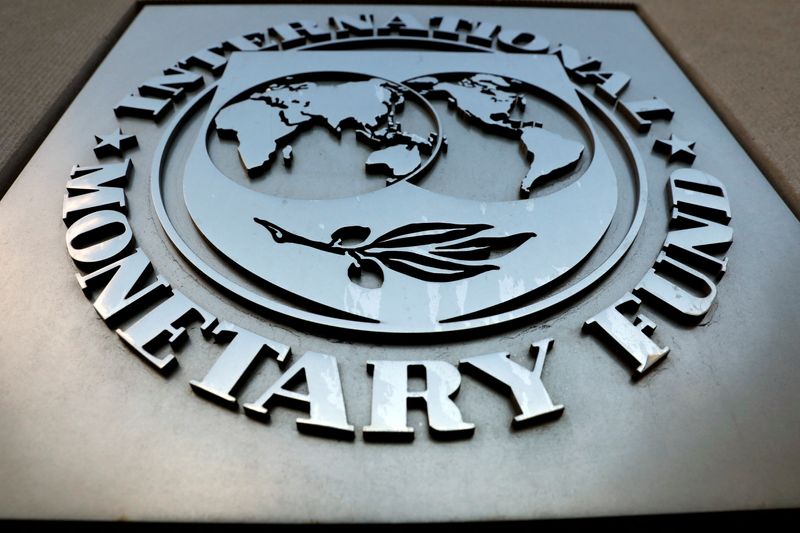By David Lawder
WASHINGTON (Reuters) – The world’s complete public debt is about to exceed $100 trillion this yr for the primary time, and should develop extra shortly than forecast as political sentiment favors greater spending and gradual development amplifies borrowing wants and prices, the Worldwide Financial Fund stated on Tuesday.
The IMF’s newest Fiscal Monitor report confirmed international public debt will attain 93% of world gross home product by the top of 2024 and method 100% by 2030. That might exceed its 99% peak throughout COVID-19. It will even be up 10 proportion factors from 2019, earlier than the pandemic exploded authorities spending.
Launched per week earlier than the IMF and World Financial institution maintain annual conferences in Washington, the Fiscal Monitor stated there are good causes to consider future debt ranges might be nicely greater than presently projected, together with a need to spend extra within the U.S., the world’s largest financial system.
“Fiscal policy uncertainty has increased, and political red lines on taxation have become more entrenched,” the IMF stated within the report. “Spending pressures to address green transitions, population aging, security concerns, and long-standing development challenges are mounting.”
CAMPAIGN SPENDING PROMISES
The IMF’s considerations about rising debt ranges comes three weeks earlier than a U.S. presidential election during which each candidates have promised new tax breaks and spending that might add trillions of {dollars} to federal deficits.
Republican presidential candidate Donald Trump’s tax reduce plans would add some $7.5 trillion in new debt over 10 years, greater than twice the $3.5 trillion added from the plans of Vice President Kamala Harris, the Democratic nominee, in line with the central estimates the Committee for a Accountable Federal Funds (CRFB), a finances think-tank.
The report finds that debt projections are inclined to underestimate precise outcomes by sizeable margins, with realized debt to GDP ratios 5 years forward averaging 10% greater than initially forecast.
And debt might be additional elevated considerably by weak development, tighter financing situations and higher fiscal and financial coverage uncertainty in systemically necessary economies such because the U.S. and China. The report features a “severely adverse scenario” involving these elements that exhibits international public debt may attain 115% in simply three years, 20 proportion factors greater than presently projected.
SPENDING BRAKES
The IMF repeated its requires extra fiscal consolidation, saying the present surroundings with stable development and low unemployment was an opportune time to take action. But it surely stated present efforts, averaging 1% of GDP over the six years from 2023 to 2029, are inadequate to cut back or stabilize money owed with a excessive likelihood.
A cumulative tightening of three.8% could be wanted to realize this purpose, however within the U.S., China, and different nations the place of GDP shouldn’t be forecast to stabilize, considerably higher fiscal tightening could be wanted.
The U.S. this month is anticipated report a fiscal 2024 deficit of about $1.8 trillion, or greater than 6.5% of GDP, in line with the Congressional Funds Workplace.
It stated the U.S. and different nations the place debt is projected to continue to grow, together with Brazil, Britain, France, Italy and South Africa, may face pricey penalties.

“Postponing adjustment will only mean that a larger correction is needed eventually, and waiting can also be risky, because past experience shows that high debt and lack of credible fiscal plans can trigger adverse market reactions and can limit the room that countries have to deal with future shocks,” stated Period Dabla-Norris, the IMF’s deputy fiscal affairs director.
She stated cuts in public funding or social spending, are inclined to have a a lot bigger damaging impression on development, than extra poorly focused subsidies akin to for gasoline. Some nations have room to broaden their tax bases and enhance the effectivity of tax collections, whereas others could make their tax programs extra progressive by taxing capital beneficial properties and revenue extra successfully, Dabla-Norris stated.




